You’re walking through the woods at dawn when you see a cat-sized creature shuffling along. As it passes, you are struck by the thick, naked tail, the pointed snout, coarse fur and weirdly long fingers. An opossum.
It’s a familiar and common creature in many parts of North America. Some find them creepy. Some find them cute. But when you see one up close, you can’t help but be struck by just how utterly bizarre it is. It has a prehensile tail. It has a thumb. It doesn’t look like anything else you see in field or forest.
And there is truth to this perception. There are more than 110 species of opossums ranging across Central and South America (not to be confused with possums, an Australian order of mammals that aren’t closely related). But the Virginia opossum (Didelphis virginiana) is the only marsupial found north of Mexico.
As you might expect of such a peculiar-looking animal, the Virginia opossum is the subject of its fair share of folklore and myth. But there’s no need to embellish the opossum: it is a fascinating, adaptable creature that has found a way to live alongside humanity.
Enjoy these opossum facts. And, as always, leave your own opossum observations in the comments.
-
Playing Possum
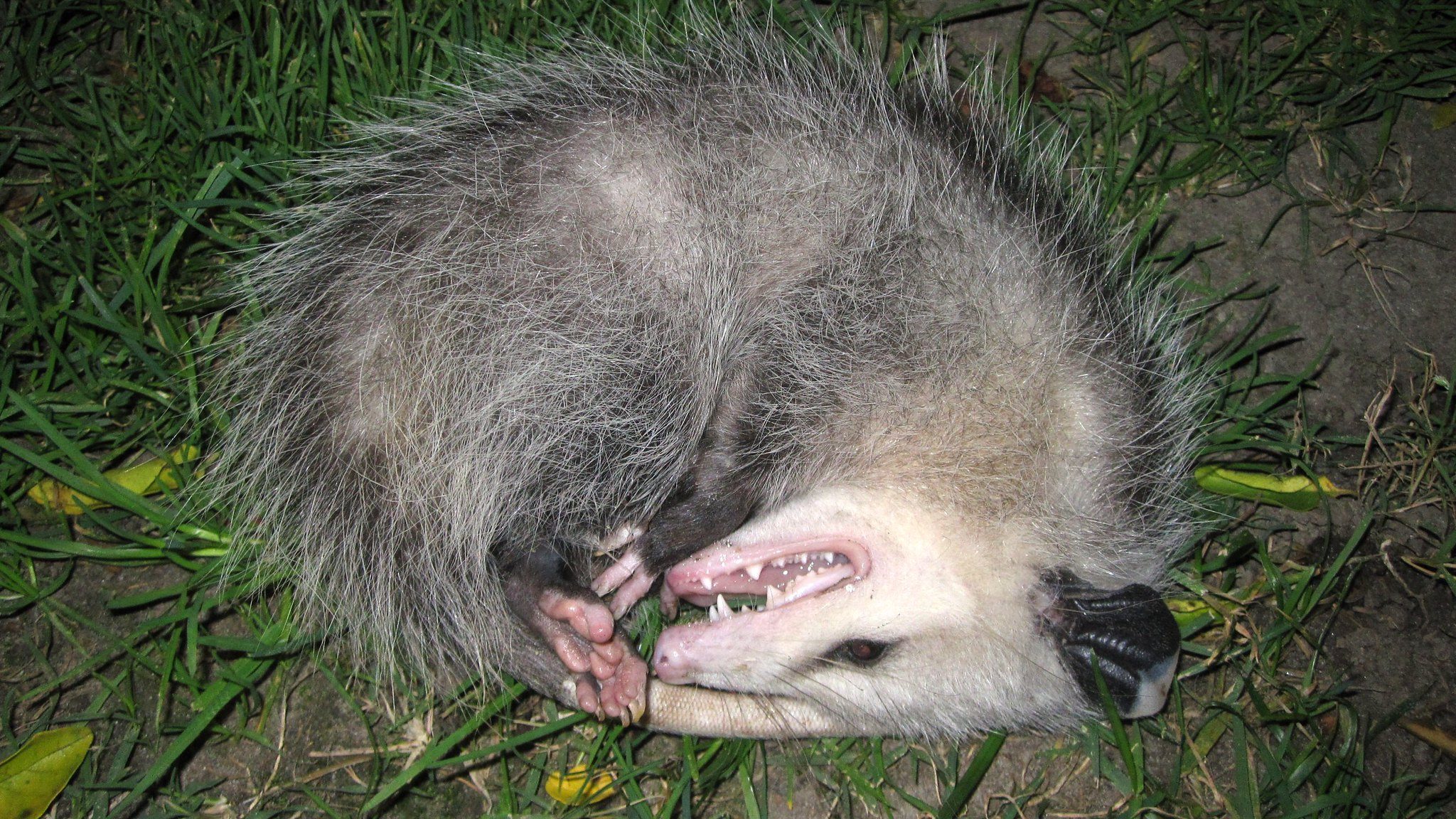
Virginia opossum playing dead © Tony Alter/ Flickr One of the most commonly known habits of opossums is “playing dead” or, as it is frequently called, “playing possum.” This is real, although the opossum is not playing, which suggests there is some intent at work.
An opossum, when confronted with a threat, will often hiss or bare its teeth. Or more likely, run. But if it is surprised by a predator, it will enter a catatonic state. It basically faints and is in a state of unconsciousness. The opossum has no control over this; it’s involuntary.
It does indeed appear if the opossum is dead. Its teeth are visible, as if in a death grimace. It emits a foul substance from its anus, the smell described as corpse-like.
A predator is confronted with what appears to be dead, unhealthy prey, and may leave the opossum alone.
This death-feigning strategy, as some sources note, is not without its risks. The opossum is unconscious. So if the predator decides to gnaw on the opossum anyway, there’s no escape. It is also commonly cited as a reason why you see so many road-killed opossums, but I found a lack of research support for this.
The opossum will remain in this unconscious state for minutes to hours.
-
The Nostril-Birther Myth
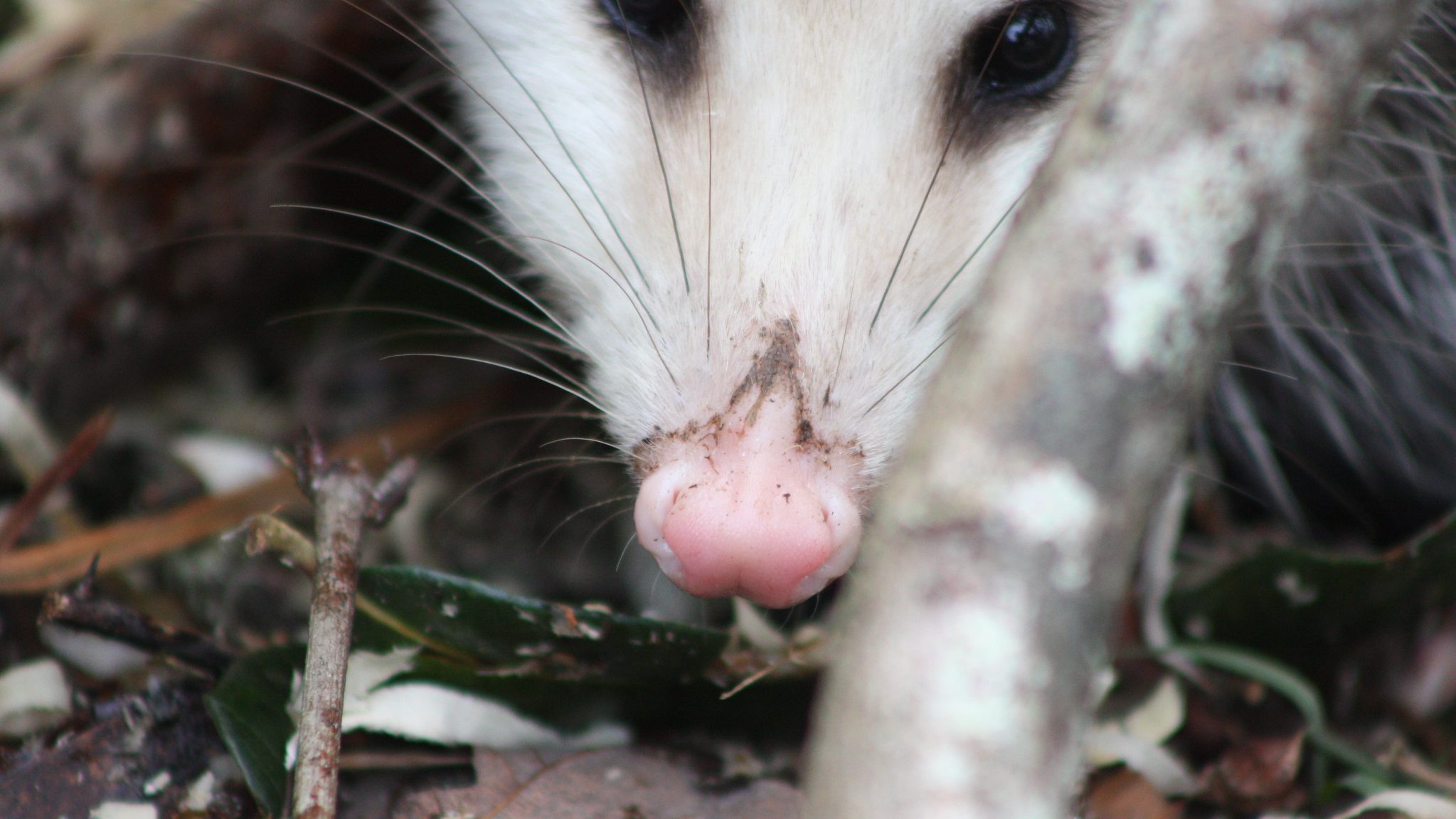
Virginia opossum nose (this is not where baby Virginia opossums come from) photo © VA State Parks Staff/Flickr It’s probably unsurprising that an animal that transforms itself into a smelly corpse is going to be the subject of folk tales. One of the wackiest myths is the once-common view that female opossums give birth out their nostrils. There’s no fake news like wildlife-related fake news.
Female opossums often lick their pouch and surrounding areas before giving birth, sometimes making a sneezing sound when they do. Observers apparently then peered into the pouch, saw newly born young possums and made the considerable mental leap that the female opossum had sneezed out the babies.
A further narrative component to this tale is that male opossums have a two-pronged penis (which is true of opossums and many other marsupials). Backwoods wisdom claimed this organ fit perfectly into the female’s nostrils, but please don’t contemplate how someone reached this conclusion.
No, opossums don’t sneeze out their young, but real opossum birth is plenty weird in its own right.
-
It’s Tough to Be a Walking Embryo
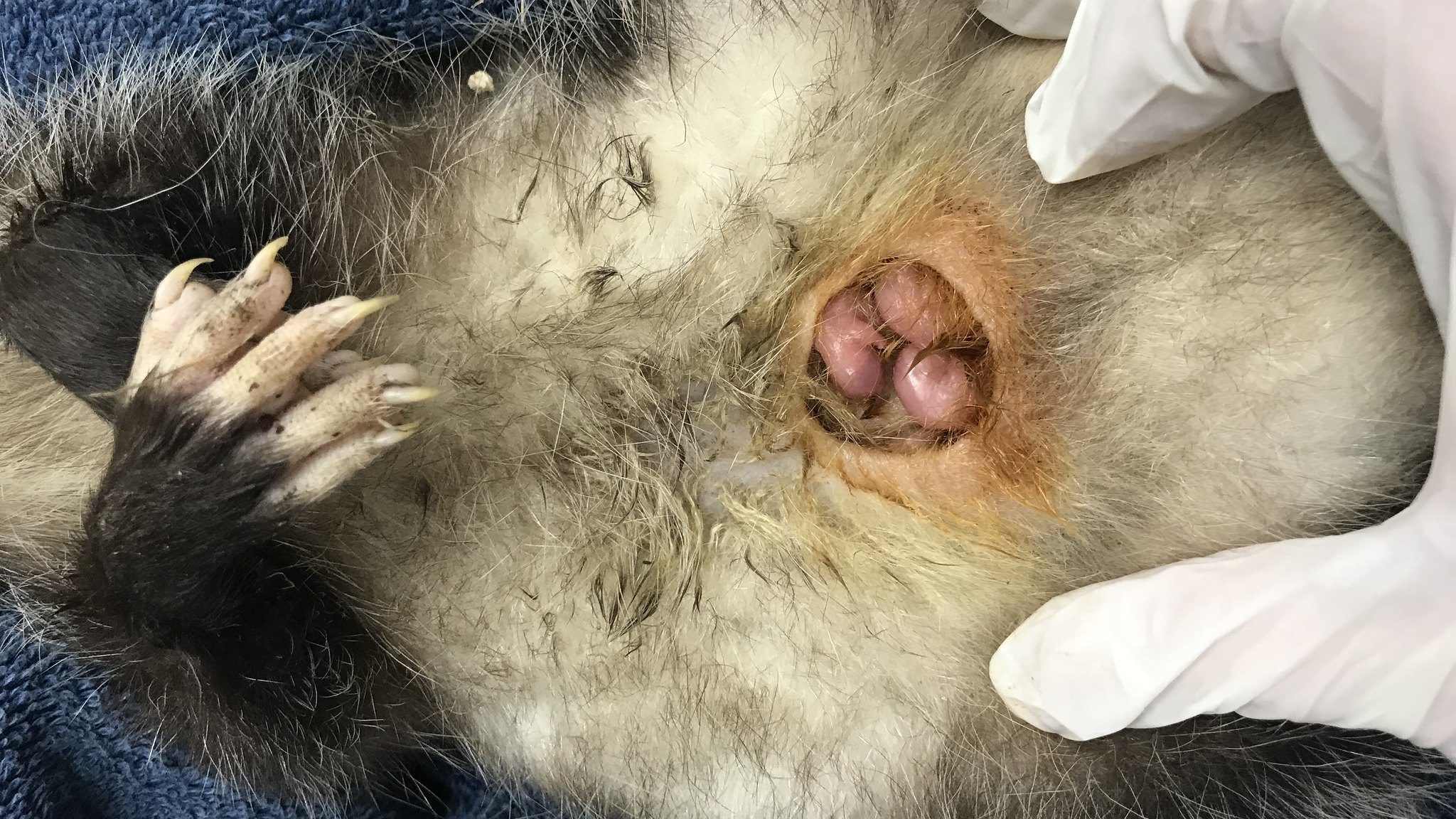
Virginia opossum pouch full of babies © Hobbitstee Wildlife Refuge /Flickr Baby Virginia opossums are born hairless and sightless and are about the size of a honeybee. They are essentially, as nature writer Ted Williams notes, walking embryos. Immediately upon birth, they have to use their small but strong front legs to clamber into the pouch.
The mother opossum licks the pouch and other fur (see above) to help the baby opossums in their journey. Many still do not make it. Once in the pouch, life gets no easier. An opossum litter may consist of 25 young, but a female has only 13 nipples, not all of which may provide milk. If the opossum doesn’t fasten to a functioning nipple, it dies.
The lucky survivors stay attached for 50 to 70 days (however, they are not fused to the nipple, another common myth). After this, they may stay in the mother’s den or ride around on her back. After approximately 120 days, they depart to live the life of a solitary opossum, a transition that 60 percent do not survive.
It’s not easy to be a baby opossum.
-
Northern Exposure
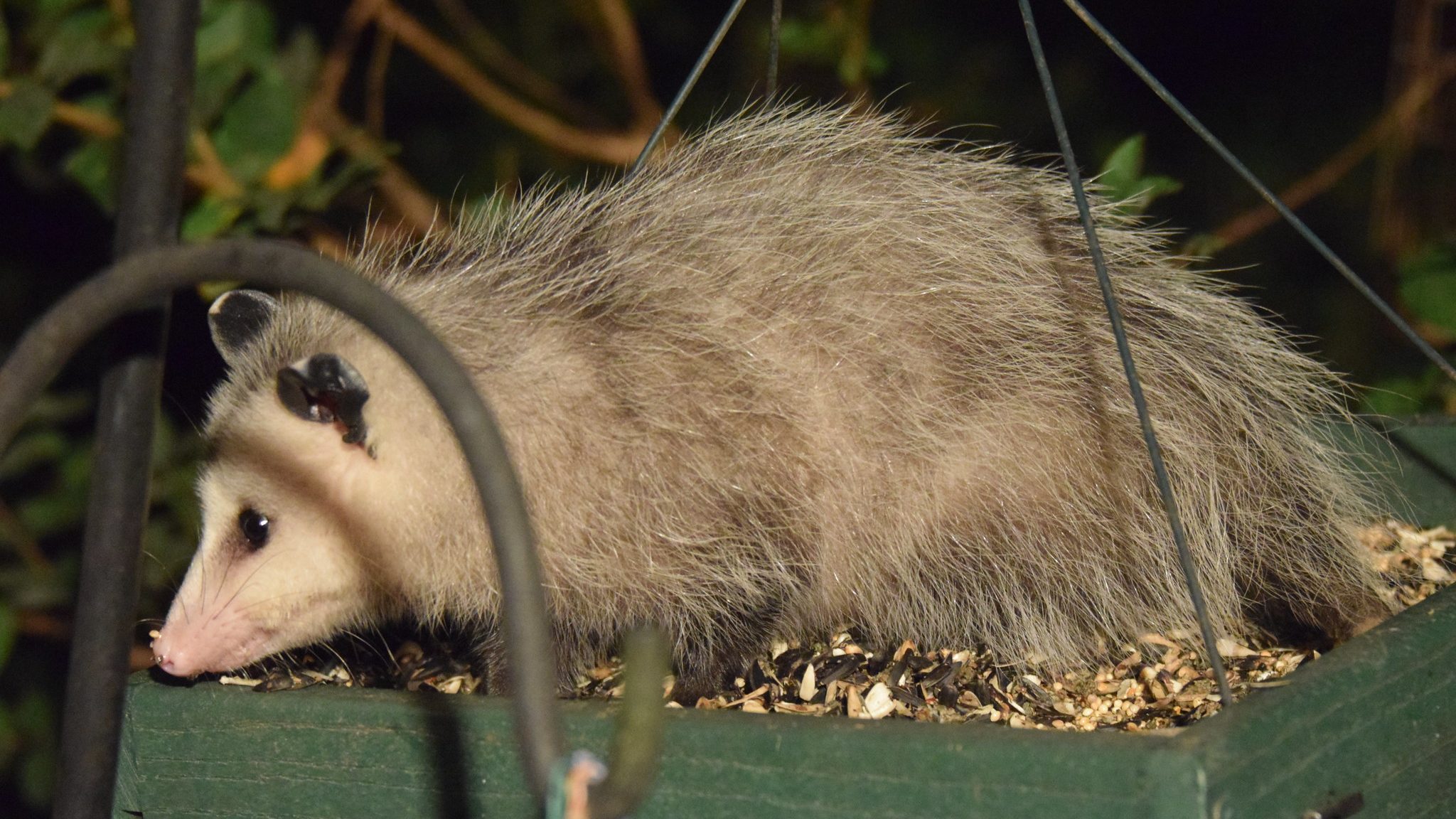
Virginia opossum in the bird feeder © Tony Alter/Flickr The Virginia opossum is a tropical species but during its evolutionary history has gradually moved north. In 1900, opossums ranged in the southeastern United States, but then began a rapid northward expansion. Today they are fairly common in New England and the Upper Midwest, and range into Canada.
Climate change has likely played a role, but as University of Michigan researcher Lisa Walsh notes, the availability of easy food provided by agricultural and suburban areas is also important. Opossums will eat just about anything. Earthworms and insects found in yards, garden plants and garbage create an opossum smorgasbord.
Opossums are generalists, enabling their spread. They can live in trees, den in burrows or even make use of abandoned buildings. Roads pose definite hazards – and unfortunately roadkill is how many of us know the opossum – but they are prolific breeders.
Despite their adaptability, a tropical mammal is not particularly suited for a tough winter…
-
Frostbitten Tails
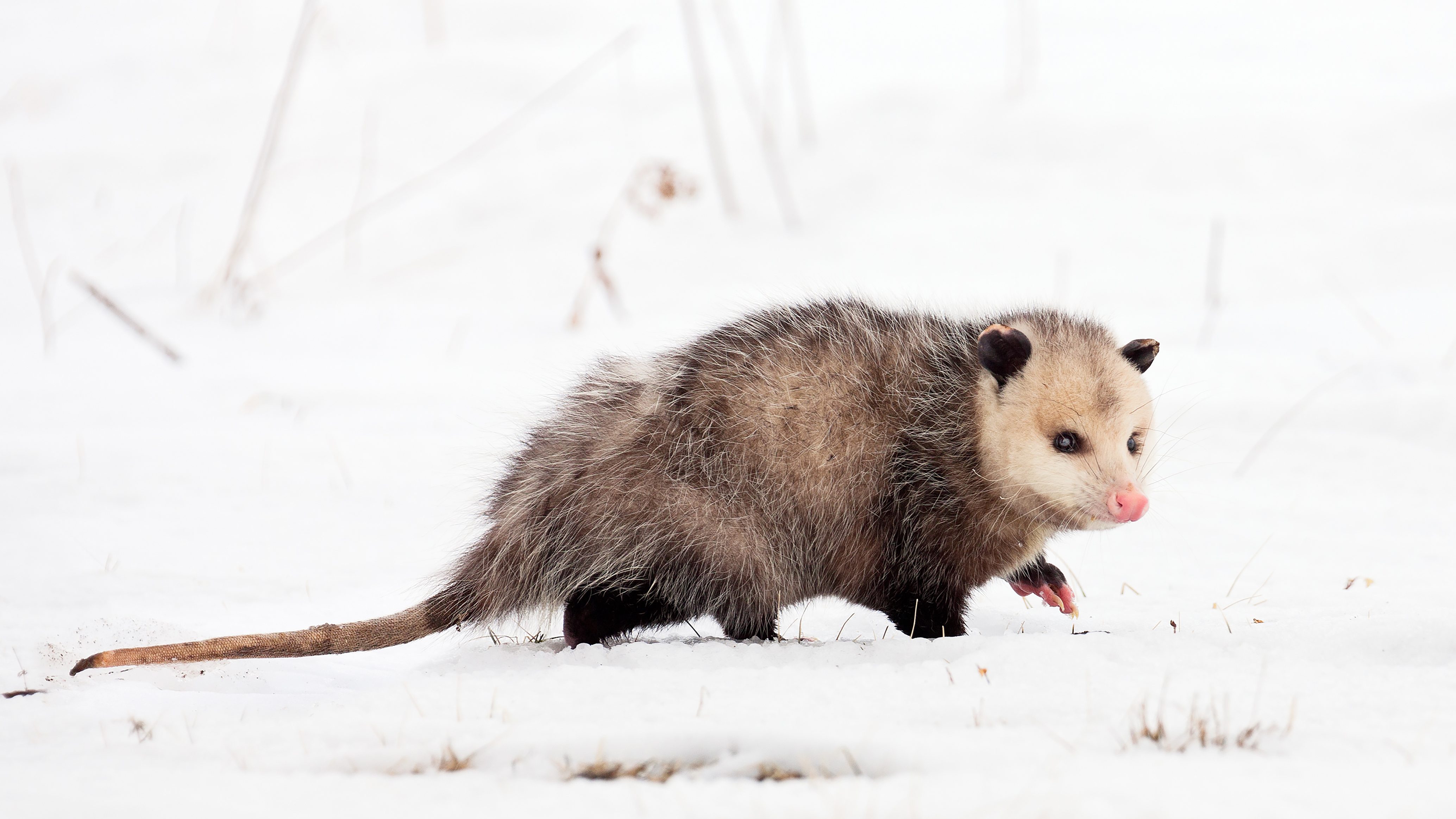
An opossum in winter at TNC’s Nachusa Grasslands Preserve, Illinois. © Dee Hudson/TNC Unlike some other mid-sized mammals that thrive in the presence of humans – think raccoons, red foxes, coyotes – opossums don’t have furry, protective tails. In fact, their tails (and ears) are hairless, making them particularly susceptible to frostbite and even hypothermia.
Many opossums bear physical evidence of surviving harsh winters – damaged ears and tails. Their tails often appear stumpy or as if something had bitten them off, but these are signs that their tails suffered frostbite.
Opossums will den for a few days to escape the cold, but they don’t hibernate. They have to feed periodically. Sometimes they’ll change their nocturnal habits and feed in daylight hours during the winter, to take advantage of warmer temperatures.
When I lived in Pennsylvania, I rarely saw opossums during the day, except on a cold January or February afternoon.
This daytime foraging doesn’t help much during periods of frigid weather. After extended cold periods, you can expect to see a lot of tail-challenged opossums.
-
Life on the West Coast
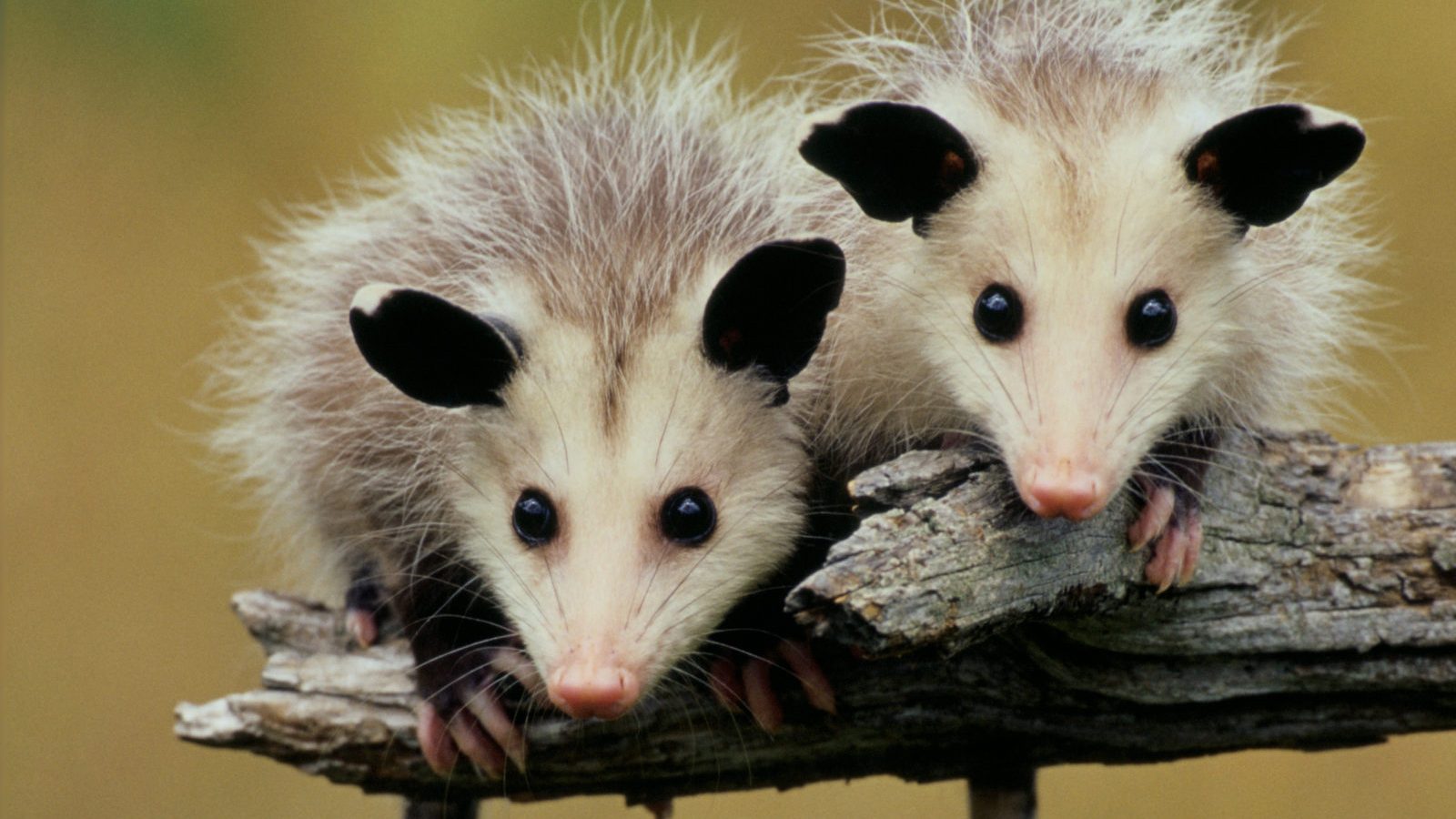
Two baby possums Photo Credit: © Gerald H. Emmerich, Jr. If you look at the opossum’s range map, they now occupy much of the eastern half of the country. There’s a big blank spot in the Great Plains and Rockies, where they are not found. But you will note that opossums are also found all along the West Coast of the United States.
Is this part of their range expansion? Well, yes, but for different reasons than elsewhere. On the West Coast, opossums were introduced on purpose. Some were released in southern California in 1890, for reasons that remain unclear.
Another batch was delivered west a few years later, this time brought along by Southerners relocating to California. In the U.S. South, opossums were a popular hunting quarry and wild food, so the idea was that they were brought to provide a taste of home. Other opossums escaped from a fur farm, and some were believed to be released pets.
Now opossums are firmly established from California to Washington, and most people probably don’t even know they’re non-native. They live in human-altered habitats, and clean up garbage, so as non-native species go, they’re probably more beneficial than harmful.
-
Of Ticks and Snakes
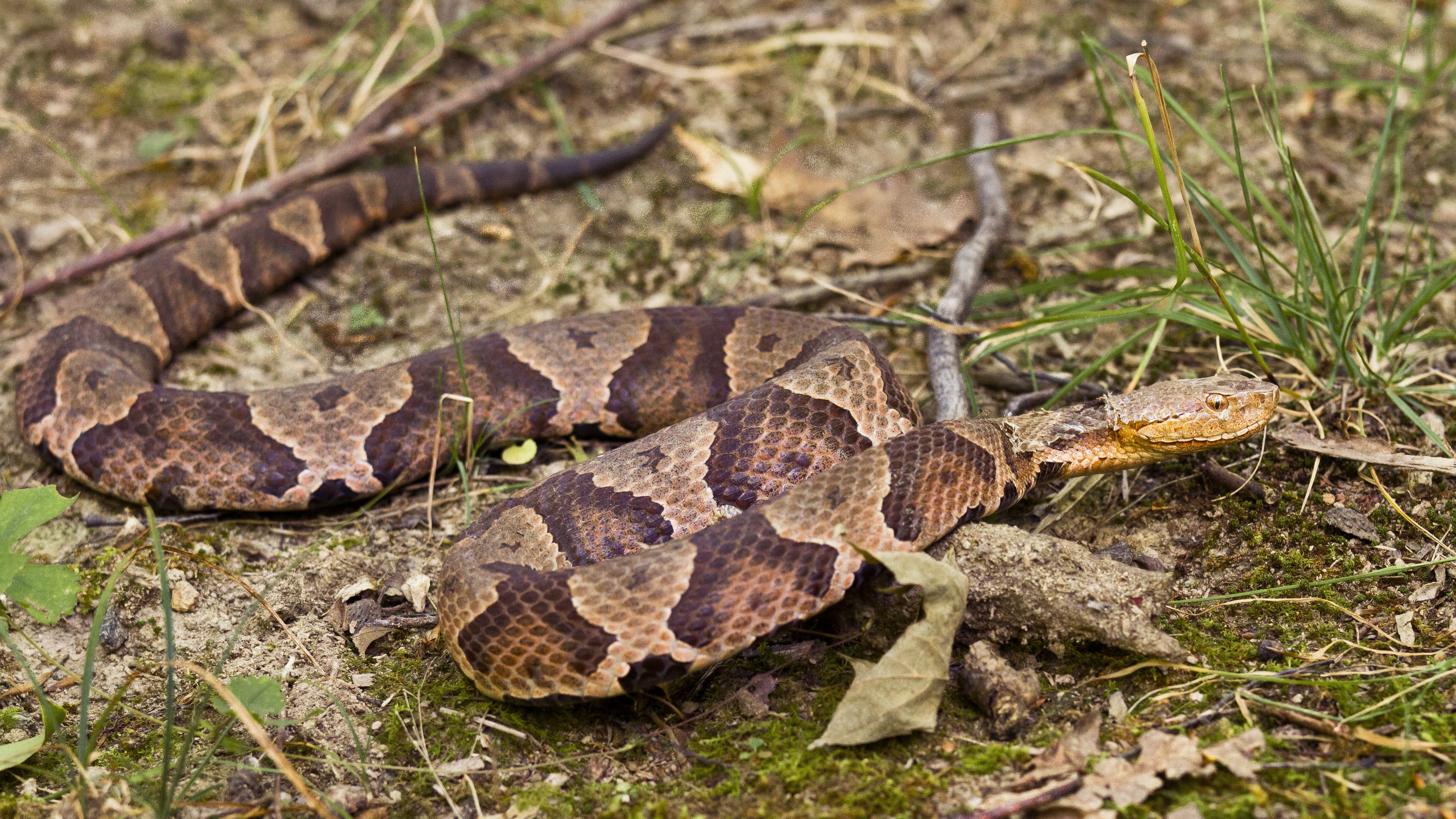
Northern Copperhead in the Appalachian highlands of West Virginia © Kent Mason Perhaps you’ve seen the headlines: Opossums fight Lyme disease! This has become a mainstay of any story about opossums. It’s fascinating to me as a study in science communications. The original study was in a controlled setting, in which dozens of ticks were put in the same cage as opossums. Opossums are fastidious groomers – in fact, they’re practically odorless unless they’re feigning death – so 97 percent of the ticks were cleaned off and consumed.
That’s interesting. It is even more interesting that it is then taken as fact that opossums are important in reducing Lyme disease. I have seen no study that shows more opossums means fewer ticks, or even that opossums feast on huge numbers of ticks in the wild.
I understand the appeal of this idea: It presents a simple and pleasing natural solution (more opossums!) to the complex and horrible problem of Lyme disease. But more research is needed. Almost certainly, solving Lyme disease will be far more complex and will also involve the politically unpalatable idea of reducing the white-tailed deer herd.
So maybe opossums don’t have tick-fighting superpowers. However, they are resistant to most forms of snake venom, including venom from rattlesnakes and copperheads. According to Medical Discovery News, this is because “a protein in their blood binds to the toxins and neutralizes them.”
There are now research efforts to synthesize this protein to make antivenom for humans.
-
Huge Opossums

Your friendly neighborhood opossum © USFWS Opossums are increasingly found even in urban areas, and they’re thriving. Research published in Northeastern Naturalist found that opossums living in urban areas had an average body mass that was 34 percent larger than that of their rural counterparts. The home ranges of city opossums, on the other hand, were smaller.
So if you live in the eastern half of the United States, or the West Coast, there’s a good chance you have an opossum neighbor. Some are alarmed by this very toothy, somewhat unsettling critter. The notorious Toronto mayor Rob Ford once issued dire warnings about the “vicious” opossums. This opinion is just as baseless as the nostril thing.
As city wildlife goes, opossums make good neighbors. They rarely contract rabies. They won’t eat your pets. They will gobble up garbage, including bones and other refuse raccoons won’t touch. They may look and act a bit odd by human standards (but should we really be judging?) but a closer look reveals a fascinating creature. One that goes shuffling along, adapting to our ways and thriving in our midst.




Thank you for the information! We should respect and protect all animals, including this poorly judged opossum .
Thank you for an enlightening and informative article.
Regarding your assurance that opossums “won’t eat your pets,” you are very, VERY misinformed. Anyone with poultry for pets should be very wary, for if an opossum digs or otherwise breaks into a chicken or other poultry sleeping area the result is devastating. An opossum will pull the chickens from their roost and ducks from their nesting area and begin eating them, beginning with the cloaca inward, consuming their innards while they are still alive. Having encountered this horrifically unforgettable experience more than once, I urge you be accurate in your reporting.
I love opossums . can’t understand why people are so mean to them. Opossums power!!!
When the Opossum plays dead in my very large open yard, it doesn’t curlup in a ball. It will just fall over and play dead right in front of me !! I’ll finish doing whatever I was doing and walk off, pretty soon I’ll look out and it’s gone. This is the first yr I have ever seen a tail that’s not all there. It concerns me. Wonder if it will grow back grow back, I’m pretty sure this one is a female. Time will tell !!
If we relocate one 20 miles away to a nicely wooded area with a pond, what are the chances that it will return to our area? We have a nearby creek and our neighbors have a chicken coop.
Thanks for the info. We recently have noticed that we have 2 baby possums hanging around our back yard. The mama , I think, got ran over in front of the house. Shortly after that we started seeing the signs of something foraging in our backyard. We got out the trusty trail cam, and discovered that we have 2 young possums. We have been leaving out watermelon pieces,, HB eggs, bologna , and lately leftover tortellini noodles. I’ve identified 2 , and one is darker than the other. Does that mean we have a boy and girl? Both appear to be about the same size. Happily to report, they both are eating well, and growing in size.
Thankyou for very interesting & informative message. At 75yrs I am always learning new information & your message was so welcome & very interesring.
Excellent, very interesting information. Thank you very much. I am a retired mammalogist.
I have quite a few opossum living in the woods that surround our house and 3 acres plus a pond in the Dismal Swamp in NC. Unfortunately, we also seem to be a dumping spot for bad pet owners. We have 20 or so feral and tame cats. I have put out cat food and seen them eating together. My dog cares for neither. I, however can’t stand the thought of killing anything that we aren’t eating and giving thanks for. I have now started checking opossum roadkill pouches for any babies that can possibly survive and I I always move them from the roads. As a biker, any roadkill and grass clippings can be dangerous, even deadly!!
LOVE YOUR ARTICLES!!!